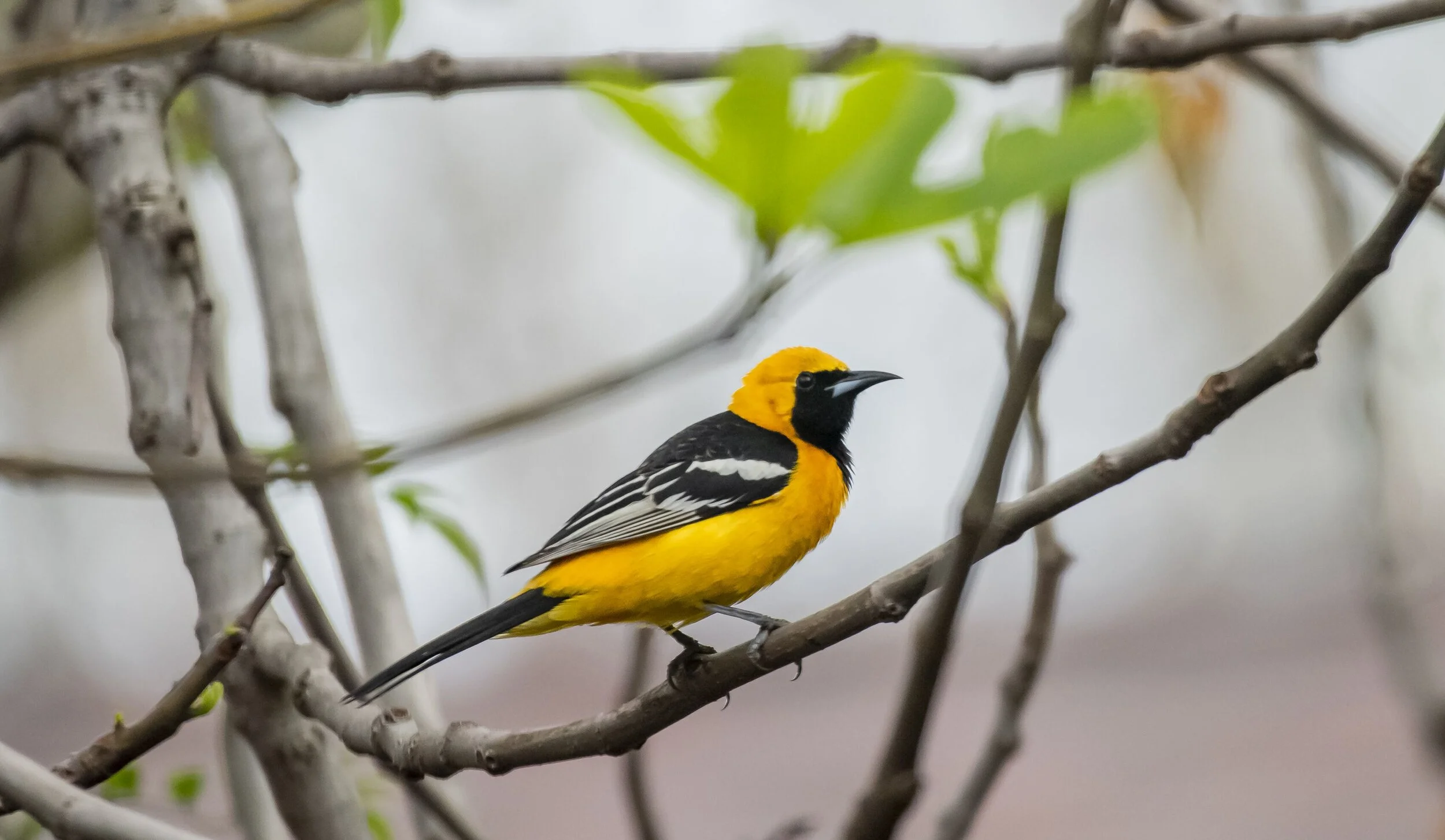Hooded Oriole
by Dave Zittin
Spring is here and summer is around the corner. I know this when a high-speed brilliant yellow streak flies towards the jelly feeder and lands there. The Hooded Oriole has returned to our neighborhood and, if we are lucky, we will be treated to parents and offspring shortly.
Attracting Hooded Orioles to Backyards
Homemade jelly feeder filled with grape jelly. Dave Zittin
There are various ways to attract this species. I have had success using a homemade jelly feeder filled with grape jelly. The feeder I am using now is an idea I copied from feeders I saw in Southeast Arizona.
Orioles will eat from orange halves and from feeders similar to those used for feeding hummingbirds, but with larger feeding ports to accommodate the large oriole bill. The feeding handbook at Feederwatch.org states that the sugar concentration for orioles should be 6:1 (water:sugar by volume). This is more dilute than that usually used for hummingbirds which is typically 4:1. I tried orange halves once, but they did not work for me.
Warning, you may have troubles with ants. There are some effective inexpensive ant guards on the market.
Description
Hooded Orioles are so named because they have a yellow-orange hood. To me this name was a mystery for a long time because I had trouble visualizing the hood. Instead, I saw the black bib that covers the lower part of the face down to the upper breast and thought they should be called the “bibbed oriole”. However, once I let my brain invert what I was seeing, the yellow-orange hood became apparent. I have encountered others who had the same problem, so I know I am not alone.
Males of this species have a prominent white wing bar. Females have a smaller, less obvious wing bar. The belly on both sexes is a uniform yellow color. The top of the beak (culmen) has a distinct downward curve (decurved).
I often find them on neighborhood walks by listening for their distinct chatter call.
Male Hooded Oriole. Notice the decurved beak and the uniform yellow belly. Dave Zittin
Male Hooded Orioles have prominent white wing bars. Dave Zittin
Distribution
Orioles winter in Mexico. In the spring they make their way north to breeding grounds in the Southwest United States and as far north as Humboldt County, California. Orioles normally arrive in Santa Clara County in early April. The males arrive about a week before the females.
Historically, Hooded Orioles occurred in high densities in the lower Rio Grande Valley. In the early 1950s a freeze put an end to extensive citrus farming there and crops replaced citrus groves. Field crops are more agreeable to both the Brown-headed and the Bronzed Cowbirds who parasitize nests of various species including orioles. This has been especially devastating to Hooded Orioles and contributed to their decline in the Lower Rio Grande Valley. Since this time Hooded Orioles have spread into New Mexico, Arizona and California. They favor palm trees on which to build their nests. Palm planting in the northern parts of California have promoted a northward extension of the Hooded Oriole range. They are comfortable in and around populated suburban areas.
Similar Species
There are two common oriole species in Santa Clara County, the Hooded Oriole and Bullock’s Oriole. The males of the two species are easy to tell apart by examining color patterns of the head. Bullock’s Oriole has a black cap and a black eye line. The top of the Hooded Oriole’s head is an orange-yellow color and there is no eye line. Another striking difference is that Bullock’s Oriole has a very large white patch at the front of the folded wing compared to the bold, but smaller white wing bar of the Hooded Oriole.
Male Hooded Oriole. It has a yellow top of head and no eye-line. Dave Zittin
Male Bullock’s Oriole with black cap and black eye-line. Tom Grey
Telling the females apart is a little more difficult. Noting the belly color is important. The belly of a Hooded Oriole female is a uniform yellow-orange color. The belly color of the Bullock’s Oriole female is conspicuously gray or white.
Female or Juvenile Hooded Oriole with a uniform yellow belly and decurved bill. Dave Zittin
Female Bullock’s Oriole with gray belly. Tom Grey
Explore
All About Birds: Hooded Oriole
More Backyard Bird Information
View more common Santa Clara County Backyard Birds
Visit our Backyard Birding page
Read our Notes and Tips from a Backyard Birder series
Tell us what you’re seeing in your yard! Send your notes, photos, and sound clips to backyardbirds@scvas.org. We’ll feature your submittals on our website.
Banner Photo: Hooded Oriole by Hita Bambhania-Modha








